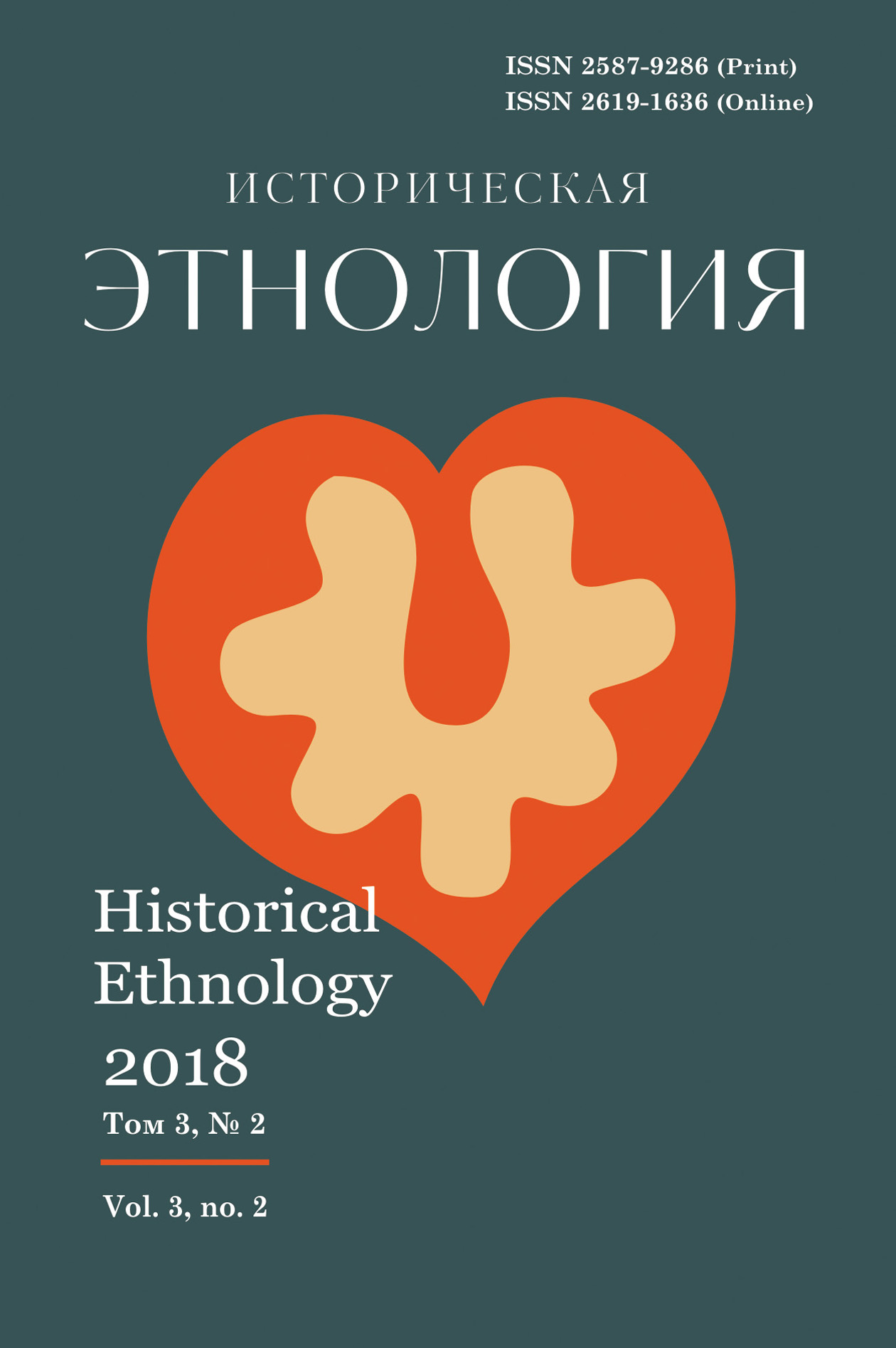Роль английского языка в языковом ландшафте г. Казани
И.С. Шарафутдинов
234–251 стр.
doi.org: DOI: 10.22378/he.2018-3-2.234-251
Одним из способов изучения распространения английского языка в неанглоязычных странах является исследование их языковых ландшафтов. Особый интерес представляют би- и мультилингвальные регионы, где английский язык составляет конкуренцию местным и общенациональным языкам. В данной работе исследуется то, как английский язык проявляет себя в языковом ландшафте г. Казани (Республика Татарстан, Российская Федерация), в которой два языка – русский и татарский, имеют официальный статус. Татарстан, и особенно его столица Казань, является одним из ведущих финансовых, промышленных, образовательных, культурных и туристических центров в России. В последние годы она приняла ряд мировых спортивных мероприятий и международных фестивалей. Возросшая активность на мировой арене оказала влияние на роль английского языка в этом регионе. Исследование того, как английский язык проявляется на фоне официального двуязычия в регионе, будет способствовать дальнейшему обсуждению вопросов его распространения в мире и возможностей перехода от двуязычия к многоязычию. Данные для исследования были собраны в мае-июле 2017 года и включают в себя 188 фотографий всех знаков, найденных на улице Баумана – центральной улице Казани. Данные были проанализированы по нескольким параметрам: государственные или частные производители знака, количество языков и шрифтов на знаках, языковое предпочтение на основе семиотических особенностей текстов, наличие и тип перевода и транслитерации, типы знаков, типы заведений, тип передаваемой информации и т. Д. Результаты показывают, что английский язык интенсивно используется в регионе, особенно на частных знаках, а общее количество текстов на нем превышает количество татарских, несмотря на официальный статус последнего. Тем не менее, английский язык редко служит для передачи сложной информации и в основном ограничивается базовой грамматикой и лексикой, в пользу чего говорят несколько найденных примеров его идиосинкратического употребления. Исследование выявило, что помимо того, что английский язык используется как лингва франка для базовой коммуникации с иностранцами, он также пользуется популярностью среди русско- и татароязычного населения благодаря высокому коммерческому и культурному престижу и тесной ассоциативной связи с высоким качеством и высокими стандартами.
Ключевые слова: языковой ландшафт, Казань, английский язык, русский язык, татарский язык.
Для цитирования: Sharafutdinov I.S. The role of English in the Linguistic Landscape of Kazan // Историческая этнология. 2018. Т. 3, № 2. С. 234–251. DOI: 10.22378/he.2018-3-2.234-251
НАУЧНАЯ ЛИТЕРАТУРА
- Backhaus P. Linguistic landscapes: A comparative study of urban multilingualism in Tokyo. Clevedon, Multilingual Matters, 2006. (In English)
- Ben-Rafael E., Shohamy E., Amara M.H. & Trumper-Hecht N. Linguistic landscape as symbolic construction of the public space: The case of Israel. International Journal of Multilingualism, 2006, no. 3(1), pp. 7–30. (In English)
- Cenoz J. & Gorter D. Linguistic landscape and minority languages. International Journal of Multilingualism, 2006, no. 3(1), pp. 67–80. (In English)
- 2010. All-Russia Census results in the web-site of the Russian Federal State Statistics Service. Available in: http://www.gks.ru/free_doc/new_site/ perepis2010/croc/perepis_itogi1612.htm (accessed 05.06. 2017).
- CLF (Conseil de la langue française). La langue de l’affichage à Montréal de 1997 à 1999. Quebec, Conseil de la langue française, 2000. (In French)
- Edelman L. Linguistic landscapes in the Netherlands. A study of multilingualism in Amsterdam and Friesland. Phd-Thesis. Utrecht, LOT, 2010. Available in: http://www.lotpublications.nl/Documents/261_fulltext.pdf (accessed 05.07. 2017).
- El-Yasin M.K. & Mahadin R.S. On the pragmatics of shop signs in Jordan. Journal of Pragmatics, 1996, no. 26(3), pp. 407–416. (In English)
- Gabdrakhmanova G. & Makarova G. Vvedeniye [Introduction]. Gabdrakhmanova G.H., Makarova G.I., Mukhametzyanova A.R. (eds.) Gosudarstvenniye yaziki Respubliki Tatarstan: mnojestvennost’ izmereniy [Official languages in the Republic of Tatarstan: Multiplicity of Dimensions]. Kazan, RT AS Sh. Marjani Institute of History, 2016, pp. 121–163. (In Russian)
- Gabdrakhmanova G.F., Makarova G.I., Mukhametzyanova A.R. (eds.) Gosudarstvenniye yaziki Respubliki Tatarstan: mnojestvennost’ izmereniy [Official languages in the Republic of Tatarstan: Multiplicity of Dimensions]. Kazan, RT AS Sh. Marjani Institute of History, 2016. (In Russian)
- Gabdrakhmanova G., Makhmutov Z., Sagdiyeva E. Etnoyazikovoy landshaft gorodov Respubliki Tatarstan [Ethnolinguistic landscape of the cities of the Republic of Tatarstan]. Gabdrakhmanova G.H., Makarova G.I., Mukhametzyanova A.R. (eds.) Gosudarstvenniye yaziki Respubliki Tatarstan: mnojestvennost’ izmereniy [Official languages in the Republic of Tatarstan: Multiplicity of Dimensions]. Kazan, RT AS Sh. Marjani Institute of History, 2016, pp. 121–163. (In Russian)
- Gorter D. Introduction: The study of the linguistic landscape as a new approach to multilingualism. International Journal of Multilingualism, 2006, no. 3(1), pp. 1–6. (In English)
- Gorter D. & Cenoz, J. Knowledge about language and linguistic landscape. Cenoz J. & Hornberger N.H. (eds.) Encyclopedia of Language and Education. Vol. 6. Knowledge about Language. New York, Springer Publ., 2008, pp. 343–357. (In English)
- Griffin J.L. The presence of written English on the streets of Rome. English Today, 2004, no. 20 (2), pp. 3–7. (In English)
- Huebner T. Bangkok’s linguistic landscapes: Environmental print, codemixing and language change. International Journal of Multilingualism, 2006, no. 3(1), pp. 31–51. (In English)
- Kachru B.B. Standards, codification and sociolinguistic realism. The English language in the outer circle. Quirk R. & Widdowson H.G. (eds.) English in the World: Teaching and learning the language and literatures. Cambridge, Cambridge University Press, 1985, pp. 11–30. (In English)
- Landry R. & Bourhis R.Y. Linguistic landscape and ethnolinguistic vitality: An empirical study. Journal of Language and Social Psychology, 1997, no. 16, pp. 23–49. (In English)
- Macgregor L. The language of shop signs in Tokyo. English Today, 2003, no. 19 (1), pp. 18–23. (In English)
- Makarova G. Yazikoviye praktiki molodeji v dosugovih prostranstvah Kazani [Language use by youth in the leisure areas of Kazan]. Gabdrakhmanova G.H., Makarova G.I., Mukhametzyanova A.R. (eds.) Gosudarstvenniye yaziki Respubliki Tatarstan: mnojestvennost’ izmereniy [Official languages in the Republic of Tatarstan: Multiplicity of Dimensions]. Kazan, Institut Istorii im. Sh. Mardzhani AN RT, 2016a, pp. 104– (In Russian)
- Makarova G. Etnoyazikovoye povedeniye molodih kazantsev (po materialam poluformalizovannih interv‘yu) [Ethnolinguistic behavioour of the young Kazan citizens (a case study of semi-formalized interviews)]. Gabdrakhmanova G.H., Makarova G.I., Mukhametzyanova A.R. (eds.) Gosudarstvenniye yaziki Respubliki Tatarstan: mnojestvennost’ izmereniy [Official languages in the Republic of Tatarstan: Multiplicity of Dimensions]. Kazan, Institut Istorii im. Sh. Mardzhani AN RT, 2016b, pp. 85– (In Russian)
- Mcarthur T. Interanto: The global language of signs. English Today, 2000, no. 16 (1), pp. 33– (In English)
- Monnier D. Langue d’accueil et langue de service dans les commerces à Montréal. Quebec, Conseil de la langue française, 1989. (In French)
- Official Tatarstan. Official web-site of the Tatarstan Government. 2017. Available in: http://tatarstan.ru/eng/about/welcome.htm (accessed 01.06.2017). (In English)
- Proshina Z. English as a Lingua Franca in Russia. Intercultural Communication Studies, 2008, no. XVII (4), pp. 125– (In English)
- Reh M. Multilingual writing: A reader-oriented typology – with examples from Lira Municipality (Uganda). International Journal of the Sociology of Language, 2004, no. 170, pp. 1– (In English)
- Rosenbaum Y., Nadel E., Cooper R.L. & Fishman J.A. English on Keren Kayemet Street. Fishman J.A., Cooper R.L. & Conrad A.W. (eds.) The spread of English: The sociology of English as an additional language. Rowley, MA, Newbury House, 1997, pp. 179– (In English)
- Ross N. Signs of international English. English Today, 1997, no. 13 (2), pp. 29–33. (In English)
- Sagitova L. Dinamika yazikovih protsessov v Tatarstane: konkurentsiya yazikov v molodejnoy srede v usloviyah modernizytsii I globalizatsii [The dynamics of language processes in Tatarstan: language competition within the youth environment in the context of modernization and globalization]. Gabdrakhmanova G.H., Makarova G.I., Mukhametzyanova A.R. (eds.) Gosudarstvenniye yaziki Respubliki Tatarstan: mnojestvennost’ izmereniy [Official languages in the Republic of Tatarstan: Multiplicity of Dimensions]. Kazan, Institut Istorii im. Sh. Mardzhani AN RT, 2016, pp. 5– (In Russian)
- Sebba M. Multilingualism, multimodality and mixed-language texts. Paper presented at the 6th International Symposium on Bilingualism. Hamburg, 2007. (InEnglish)
- Scollon R. & Scollon S.W. Discourses in Place: Language in the Material World. London and New York, Routledge, 2003. (In English)
- Simons G.F. & Fennig C.D. (eds.) Ethnologue: Languages of the World, Twentieth edition. 2017. Dallas, Texas: SIL International. Available in: http://www.ethnologue.com (accessed 25.05. 2017). (In English)
- Solnyshkina M.I. & Ismagilova A.R. Linguistic Landscape. Westernization and Glocalization: the case of Kazan, Republic of Tatarstan. Xlinguae Journal, 2015, vol. 8, issue 2. Available in: http://www.xlinguae.eu/files/xlinguae2_2015_4.pdf
(accessed 17.07.2017). (In English)
- Takhtarova S., Kalegina T., Yarullina F. The role of English in shaping the linguistic landscape of Paris, Berlin and Kazan. Procedia – Social and Behavioral Sciences, 2015, no. 199, pp. 453– (In Russian)
- Tatarstan Tourism. Official website of the State Committee for Tourism in the Republic of Tatarstan. 2017. Available in: http://tourism.tatarstan.ru/rus/file/pub/ pub_857409.pdf (accessed 11.06. 2017). (In Russian) (In English)
- Ustinova I. English in Russia. World Englishes, 2005, vol. 24, issue 2, pp. 239– (In English)
- Wenzel V. Reclame en tweetaligheid in Brussel: Een empirisch onderzoek naar de spreiding van Nederlandstalige en Franstalige affiches. Brusselse thema’s 3. Brussels, Vrije Universiteit, 1996, pp. 45– (In Dutch)
- Wertheim S. Language “Purity” and the De-Russification of Tatar. UC Berkeley: Berkeley Program in Soviet and Post-Soviet Studies. 2002. Available in: https://escholarship.org/uc/item/81z5217g (accessed 11.10. 2017). (In English)
Сведения об авторе: Шарафутдинов Ильшат Султанович – магистр гуманитарных наук, аспирант отделения Английской Лингвистики Университета Регенсбурга (Universitätsstraße 31, Regensburg 93053, Germany); ilshat.sharafutdinov@stud.uni-regensburg.de
|
|








